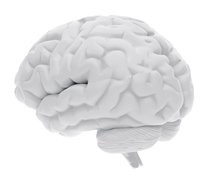
Through a novel approach to looking at brain aging, researchers at the University of Cambridge were able to cause old brain cells in rats to rejuvenate and act like younger cells and also make young cells behave like old cells. This is giving scientists hope they can develop protocols to help reverse brain aging in humans and treat conditions like multiple sclerosis (MS).
The research centered on how increasing brain stiffness causes brain stem cell dysfunction as we age. A report published in the journal Nature draws a comparison to the way everyday movements become harder as our bodies get older and our muscles and joints become stiff. Brain stiffening has an impact on the normal function of brain stem cells.
Scientists at the Wellcome-MRC Cambridge Stem Cell Institute studied the brains of young and old rats to understand the function of oligodendrocyte progenitor cells (OPCs) in age-related brain stiffening. In addition to helping maintain normal brain function, these cells are important for the regeneration of myelin, a sheath surrounding nerves that is damaged in those with MS. Age-related decline of those cells is a contributing factor in MS and also causes decreased brain in function in healthy people.
Researchers confirmed their theory the loss of function in older OPCs was reversible by transplanting cells from older, harder brains into the softer, spongy brains of younger rats. They saw those cells become rejuvenated and begin functioning like younger cells.
They then developed materials in the lab with varying degrees of stiffness to simulate the stages of aging in a controlled environment. Rat brain stem cells were then grown in the lab on these substrates. Researchers paid close attention to Piezo1, a protein on the cell surface that tells the cell if the surrounding is soft or stiff.
"We were fascinated to see that when we grew young, functioning rat brain stem cells on the stiff material, the cells became dysfunctional and lost their ability to regenerate, and in fact began to function like aged cells.” Dr. Kevin Chalut said. “What was especially interesting, however, was that when the old brain cells were grown on the soft material, they began to function like young cells—in other words, they were rejuvenated."
"When we removed Piezo1 from the surface of aged brain stem cells, we were able to trick the cells into perceiving a soft surrounding environment, even when they were growing on the stiff material", said Professor Robin Franklin. "What's more, we were able to delete Piezo1 in the OPCs within the aged rat brains, which led to the cells becoming rejuvenated and once again able to assume their normal regenerative function."
Dr. Susan Kohlhaas, Director of Research at the MS Society said, “The Cambridge team's discoveries on how brain stem cells age and how this process might be reversed have important implications for future treatment, because it gives us a new target to address issues associated with aging and MS, including how to potentially regain lost function in the brain."
Click here to read more in the journal Nature.
